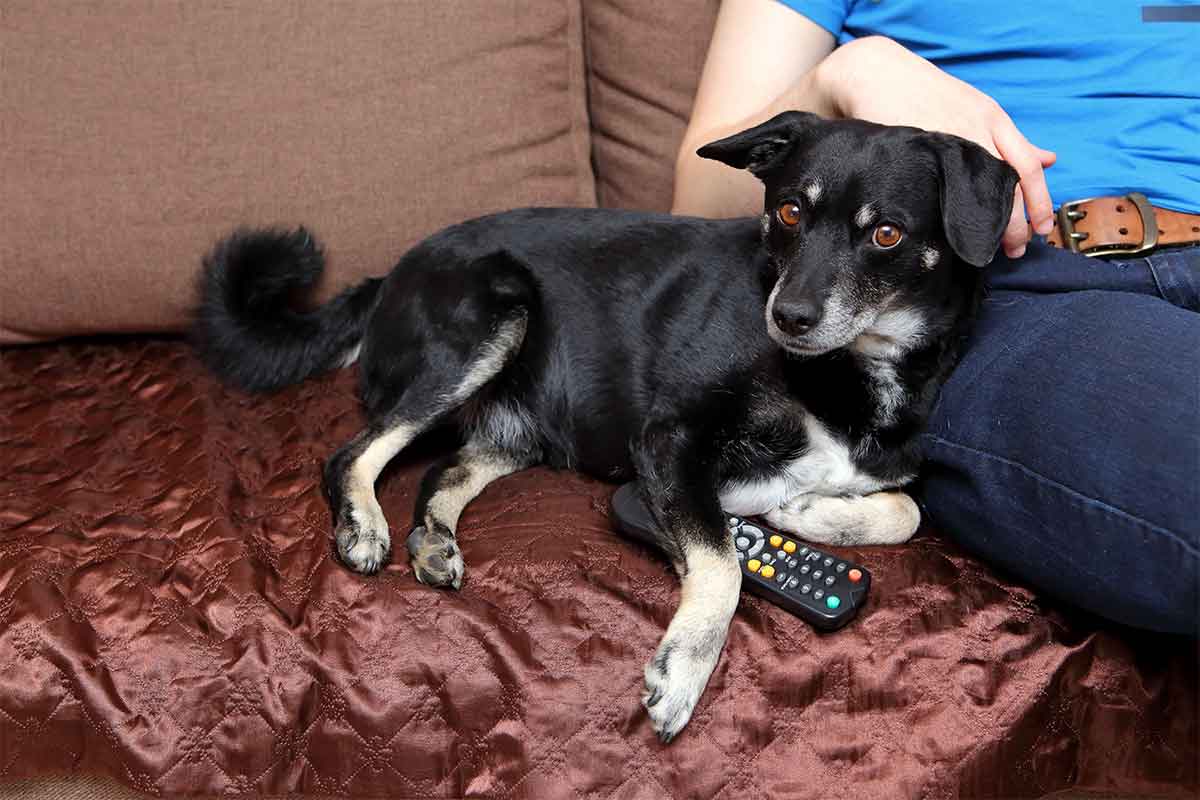When a doorbell rings on a television show or commercial in my sister Karen’s house, her three dogs unleash a chorus of barks and dash to the front door. When a dog pops into view on my high-definition television screen, Kona, my terrier mix, will sometimes trot up for a friendly look-see, give a sniff, then walk away. But even if the television screen is filled with dogs yapping and playing, my senior dog, Cleo, pays no heed.
Why do some dogs ignore whatever is airing on television while others in the same household fall into the ‘mutt-see’ TV category? Experts say it has less to do with a specific breed and more to do with personal canine preference and improved television technology.
The phenomenon of dogs acknowledging movements and sounds from televisions is growing as veterinarians and animal behaviorists explore the reasons why.

Here’s what we know:
- Dogs see the world through what is known as dichromatic vision. They see a range of two primary colors, blue and yellow. By comparison, we see a full range of colors, including reds and greens in what is called trichromatic vision.
- The canine eye can spot and see far more images in a few seconds than the human eye.
- Advances in television technology with larger high-definition and 3-D flat screens are sharper and more focused than the fuzzy, flickering images on analog television sets.
- Scientists have learned that some dogs take notice and may react even to inanimate moving objects on today’s TV screens.
- In general, terrier breeds may be more apt to pay attention to action on the television screen because they are hard-wired to look, even chase, moving prey than say, hound breeds (excluding the sight hounds, such as the Greyhound, of course) who rely on their heightened sense of smell.
- Dogs, like us, have their own preferences and degrees of tuning in to their surroundings.
- Some dogs take interest in videos beyond television screens. For example, some dogs go crazy when they see other dogs or other animals moving in YouTube videos viewed from laptop computers, tablets or smart phones.
Before launching DOGTV, an HDTV cable channel dedicated to entertaining and engaging home-alone canines, Ron Levi reached out to renowned animal experts and conducted studies on the viewing habits (or lack thereof) of dogs in homes in Los Angeles and New York City. His team left security cameras inside these homes to gauge the interest among canines when the TV was off or tuned in to channels or specifically to DOGTV.
“We came to two conclusions: dogs paid more attention to DOGTV than other channels due to our content and coloring specifically created to how dogs see, and secondly, we discovered that relaxed content (no barking dogs) did relax 72 percent of the dogs tested,” he noted. “Our overall conclusion is the right content matched with the right music can help calm dogs down.”
Today, DOGTV is available in 15 countries to more than 120 million households as part of a basic cable TV or small monthly fee via cable or Direct TV.
Because dogs do not really see greens or reds well due to how receptors in their brains function, Levi makes sure there won’t be content of, say, a red ball being tossed to a dog on green grass. Color is edited before airing to benefit dogs’ dichromatic vision. In addition, sound and music are edited to tap into a dog’s unique sense of hearing in a pleasing manner.
Levi says leaving on DOGTV, standard television, or a radio tuned to a classical music station might help to calm dogs with separation anxiety or boredom issues.
“DOGTV is not a replacement for any medicine a dog may need for separation anxiety or taking a dog out to a park or hiring a dog walker during the day to give a dog the physical and mental exercise he needs,” he says. “We keep learning from feedback from our viewers what works and does not for their dogs. Because so many dogs were not happy with barking sounds, we removed them from DOGTV. We want to do what we can to make dogs feel safe and comfortable when home alone.”
- German shepherd ignores people on TV but barks loudly every time a dog appears.
- This is from DOGTV’s site with permission that features Dr. Nicholas Dodman explaining how dogs see TV and how DOGTV caters to dogs’ way of seeing – not people.
This article was reviewed/edited by board-certified veterinary behaviorist Dr. Kenneth Martin and/or veterinary technician specialist in behavior Debbie Martin, LVT








